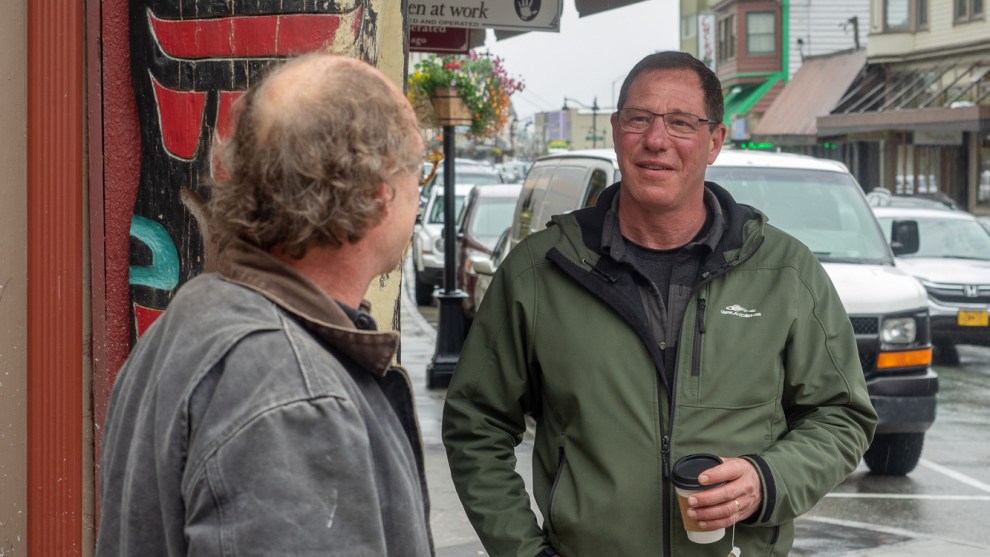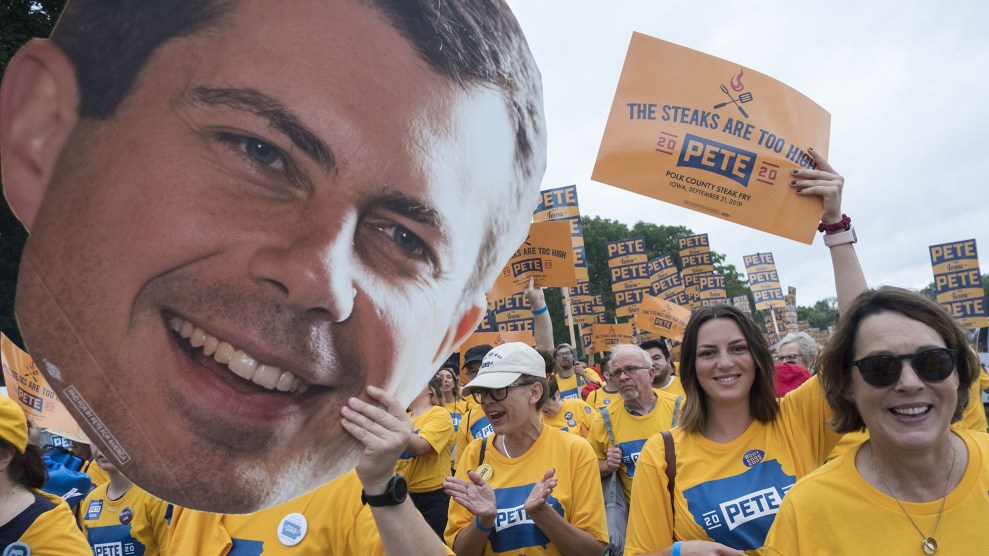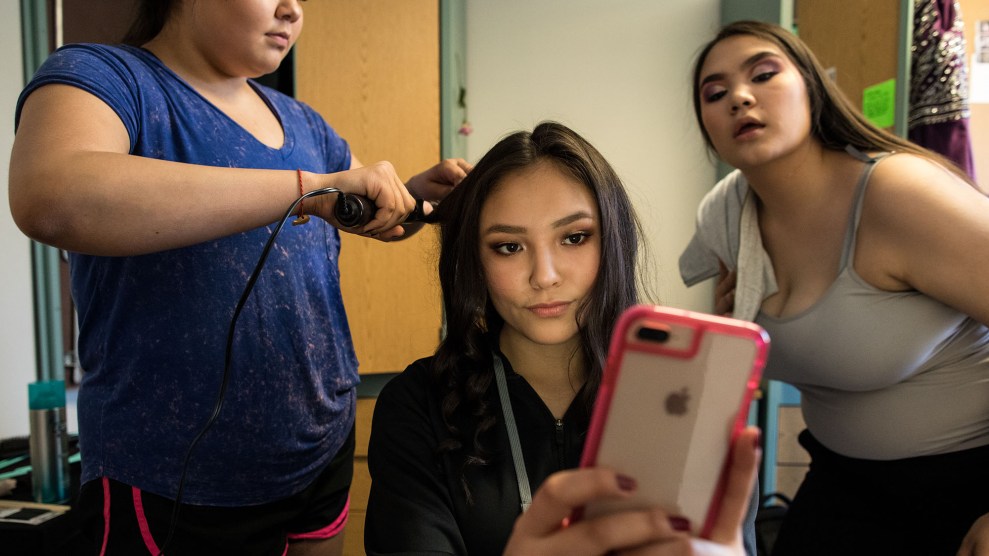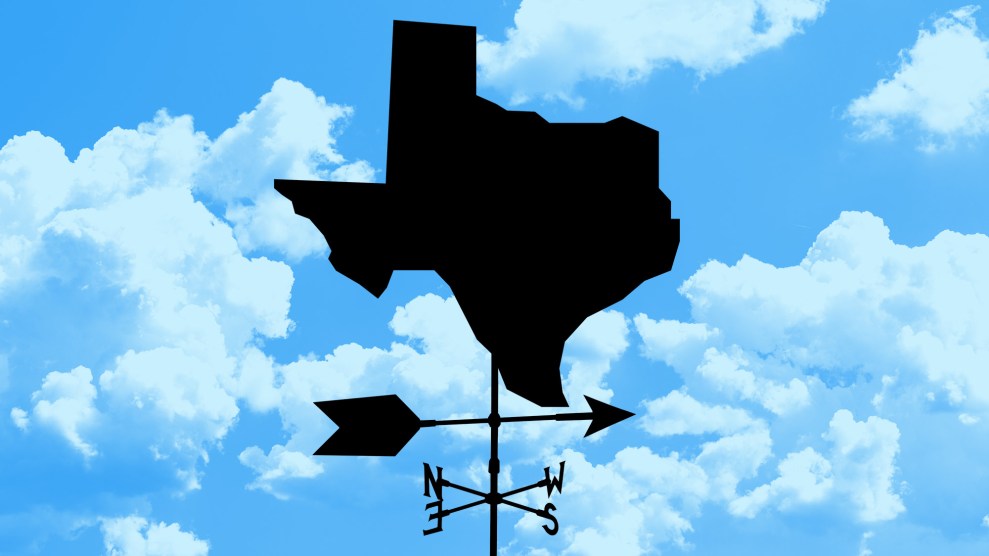
Dr. Al Gross/Flickr
If this were a normal year, volunteers for Al Gross would have begun knocking on Alaskans’ doors over the summer, searching for voters open to his independent campaign challenging an incumbent Republican senator. Come fall, the campaign would work to turn get those voters to the polls.
But the pandemic has forced major changes to the traditional campaign playbook, and in the virus’s wake, Gross’ campaign adopted an increasingly popular method of reaching voters known as relational organizing. The campaign credits its innovative strategy with helping Gross close the gap, turning his once off-the radar race against Republican Dan Sullivan into an unexpected battleground in the fight for control of the Senate.
Gross faces a steep hill. Since 1992, only three challengers have unseated a senator at the same time that the state voted for a president of the incumbent’s party. But Gross, running as an independent aligned with the Democrats, is trying to do just that: defeat Sullivan in a state that President Donald Trump is widely expected to win.
The key to Gross’ strategy is his campaign’s organizing prowess. Whereas traditional campaigning is centered around volunteers contacting strangers through door knocks, phone banking, and texting, relational organizing leverages volunteers’ existing relationships to conduct outreach to friends and family. Gross’ campaign isn’t the only long shot campaign that’s harnessed relational organizing to put itself in a position to win. But it is proving to be among the election cycle’s most adept practitioners of the technique.
When the coronavirus upended most campaigns’ outreach strategies, Blake Reinken was just coming off nine months of organizing for Pete Buttigieg’s campaign in southeast Iowa. That presidential campaign was an early adopter of relational organizing, and in Iowa, Reinken saw firsthand the power of using conversations between friends and family members to grow support, especially in smaller communities. The strategy helped Buttigieg win the most delegates at the Iowa caucuses, with particular success in the state’s small and rural towns. In June, Reinken moved to Alaska to work as the Gross campaign’s field director, ready to take lessons he learned on the plains to the last frontier. Once there, Reinken, who doesn’t give very relaxed vibes over the phone, implemented a relational strategy with, in his words, “an incredible level of intentionality.”
“When I started our field program here, I wanted to take what what I saw that worked from that program [in Iowa] and mix it with the tools that we see typically in canvassing and traditional phone banking,” Reinken explained. While the campaign isn’t leaving anything to chance, and has kept up those classic forms of outreach, the team is particularly enthusiastic about how it has applied the structure of a traditional canvassing operation to friends and family conversations. Instead of volunteers calling random voters anywhere in the state, they call members of their own communities from lists provided by the campaign. Reinken’s team also gives volunteers a single specific ask to make of their friends every week, whether it be to volunteer their time or request an absentee ballot, because he’s found that follow-through improves with just one request at a time.
Alaska is a prime state to put personal networks in action. Its population of around 730,000 is roughly the same size as the District of Columbia’s. But with a geographic mass 9,700 times greater, the result is swathes of wilderness speckled with small, far-flung communities where everyone knows everyone. A game of six degrees of separation usually ends as soon as it begins. (For example, when I called Jake Metcalfe, the head of the state’s largest public employee union, to ask about Gross’ campaign, he mentioned he’d once been the substitute teacher of Michelle Sparck, the deputy campaign manager.)
“I was also really intrigued by the opportunity to use relational organizing in a place that’s really been ripe for a friends and family strategy,” Reinken says, explaining why he was excited to apply the technique in Alaska. Traditionally, he explains, a campaign in a rural state would slowly scale up its volunteer capacity by finding new people interested in helping by knocking door to door. Instead, Gross’s team spent the summer focused on volunteer recruitment relationally, by engaging the small number of existing campaign volunteers and having them grow the volunteer base by bringing their friends on board, then training them online. By August, the campaign was ready to unleash them to talk to their own communities, wherever they lived.
“They are all over the state,” says Metcalfe, the executive director of the local AFSCME chapter that, as part of the AFL-CIO in Alaska, endorsed Gross and is canvassing on his behalf. Metcalfe boasts that the volunteers have given the campaign a physical presence “out in western Alaska. They’re out on the Aleutian chain, which is really the far west.” He added that there are others working on Gross’s behalf in the southeast panhandle and in Utqiaġvik, the state’s northernmost city—a community of about 4,500 people above the Arctic Circle. “They seem to have quite a presence in a lot of the smaller rural communities, so that is impressive.” With some communities inaccessible by car, relational organizing has the potential to mobilize people already there. And in such tight-knit communities, the word of a local can go a long way. Metcalfe also expressed admiration for the campaign’s Native Alaskan outreach program, run by Sparck, who he remembered from the Bethel classroom he stepped into as a sub years ago.
Metcalfe, whose union has dispatched masked members to knock doors in the state’s three largest cities, is impressed with the campaign’s organizing model. “As somebody that’s lived in Alaska all my life and sees the five degrees of separation that we all have here,” he says that a relational program can “reach out to an incredible number of people.”
The tight race in Alaska has become a national story over the last month. Polls show the race is surprisingly close given that Alaska is a solidly red state, and both parties have poured in money. A new Democratic-aligned super PAC just invested $4 million in television ads for Gross, which has been countered by more than $3 million from the super PAC affiliated with Senate Majority Leader Mitch McConnell. The amounts are enormous sums of money in a state with small media markets and the total population of a moderately sized city. Though history and most polling suggests Sullivan is favored to hold his seat, Gross’ campaign has kept things close enough that he has had little trouble attracting the money to put up a real fight. Between July and September, he raised $8.7 million, as Sullivan took in just $1.7 million.
Thousands of miles away, Julia Doubleday also sees the promise of relational organizing in rural areas. For her purposes, in Texas’ 25th congressional district, she’s hoping that a friends and family approach will help Democrat Julie Oliver oust incumbent Republican Rep. Roger Williams. “It’s really effective actually in smaller communities,” says Doubleday. “People tend to know their neighbors, they tend to know more about their neighbors.” As Oliver’s campaign manager, Doubleday has the task of flipping a House seat gerrymandered to protect Republicans by combining a piece of blue Austin with a large, jagged slice of rural red Texas. But as the state’s demographics rapidly shift and suburban voters flee the Republican Party, Oliver has a shot, if a tough one, in November.
Like Alaska, Texas is prime for relational strategies. The state has large rural regions where Democrats need to find lonely liberals. Texas also provides opportunity because it contains so many eligible voters who sit out every election. As the Houston Chronicle reported in 2018, “Texas isn’t a red state. It’s a non-voting state.” Campaigns there are used to working with the voter file, a list of registered voters who can be contacted and turned out. But there’s no list of unregistered nonvoters—and Democrats have learned that the best way to reach them is through the people they know.
Two years ago, a Democrat named Sri Kulkarni attempted to oust an incumbent Republican from a congressional district outside Houston. His campaign turned to relational organizing, finding thousands of new voters in tight-knit immigrant communities that weren’t plugged into politics. Kulkarni lost by just 5 points, but his relational strategy caught fire, both nationally and in Texas. His organizing director, Emily Isaac, took the lessons she learned on Kulkarni’s race to Bernie Sanders’ presidential campaign as his relational organizing director. She also spread the word to her own friends—and it caught on. One of those friends was Doubleday, who says she learned about relational from Isaac after Kulkarni’s 2018 run. “That was definitely an inspiration to us,” she says.
In the beginning, Oliver’s campaign couldn’t afford TV ads, so they instead invested in organizing. They chose a relational app called Reach to help track supporters’ conversations. Recently, they teamed up with Democrat Wendy Davis, another user of the app who is running in a separate congressional seat also containing a slice of Austin, to host a joint relational phone bank using the same app. A state House candidate whose district overlaps with the 25th also joined Reach, allowing supporters of each candidate to identify voters who live in both districts.
Some 150 miles east, Kulkarni is running again, and this time the polls show he may win in a district that has been reliably Republican for decades. “They they are definitely the reigning champs of relational,” Doubleday says of Kulkarni’s team. “They have the most relational IDs [identified supporters] of anyone that I know.”
In 2018, veteran Massachusetts campaign strategist John Walsh hoped Deval Patrick, the state’s former Democratic governor, would run for president. So he started a PAC and set out to win support for such a bid from local candidates across the country by helping them out. One race where they gave money was Kulkarni’s, where Walsh saw an organizing strategy that reminded him of Patrick’s first campaign, which, initially short on cash, was powered by word of mouth. While Patrick’s White House bid fizzled, by 2019, Walsh was running Democratic Sen. Ed Markey’s reelection race. Inspired by Kulkarni’s approach—and a long phone call with Isaac about that campaign’s strategy—Walsh built Markey’s organizing operation to be “relational first.” In August, the senator handily defeated his primary challenger, Rep. Joe Kennedy. Recently, Markey’s team has begun helping other candidates run effective relational programs, including Oliver and Davis, becoming a link in a chain that has brought the tactics honed in Southeast Texas to the Lone Star State’s capital.
It’s unclear if a relational organizing approach can bring Democrats running in red areas like Alaska and Texas across the finish line. But if they do win, the campaigns believe their friends and family approach will have made the difference, demonstrating the potential of a tactic that organizers say can empower and activate networks of overlooked voters.
















